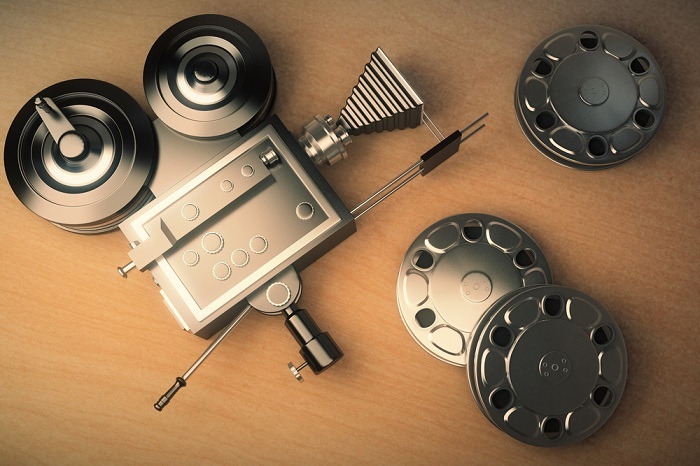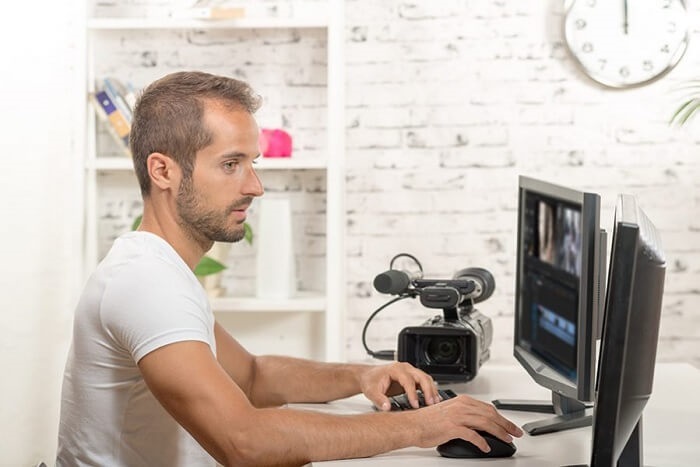As an actor, you will likely find someone that will ask you for a demo reel at some point in time. What exactly is a demo reel? Many new actors do not even know what a demo reel is, let alone, how to make a demo reel. When you hear the term, demo reel, you are being asked to see a representation of your skill. It is sort of like your commercial. It is a way for you to attempt to convince your viewers that you are the one worth spending money on. Just like a product commercial would, only, you are the product being sold.
The main idea behind a demo reel is to not only show off your raw talent, but to create an emotional response that drives a producer to hire you. Since you really only get one chance to make a first impression, you want to make it a great one. This article will give you tips on how to make a demo reel, and what you should include.

How to Make a Demo Reel: 8 Key Tips
1. Show Me the Footage
A demo reel is quickly becoming more of an important calling card than even a head shot and resume combo. It makes it convenient for online viewing for casting directors. Some won’t even consider an actor that does not have one because it makes them look unprofessional. This reel should highlight your professional work. Ideally, this will include work that has been produced professionally.
What if you are just starting out? You may not have enough for a reel. Maybe you do not have any professional footage at all. Luckily, less professional reels have become more accepted by casting professionals as long as the quality of the demo is decent. Thus, go ahead and include any independent films, web series films, and privately produced scenes within your reel if you cannot supply more professional sources.
2. Be a Good Employee
When figuring out how to make a demo reel, you have to realize that you won’t get footage right off the bat. During a project, it will likely take at least a few months to get to you. Realizing that, you should then focus on giving your best performance on the project so that you will in turn receive great footage.
Beyond that you will want to make sure you do not do anything that will damage your reputation. Having a good standing with the director, producer, and editor can make it easier to get the footage you need. Ask them for their contact info. Then, let them know you would love to include some of the footage in a demo reel you are working on. Later, after they have finished cutting the film, shoot them a quick email that includes a thank you note and ask for your footage. Then once you get the footage, you can hire an editor to get your reel going.
3. What to Include
Here are the basics on how to make a demo reel. Ideally your demo should only include 2 to 5 scenes. Make sure they vary in length and show off your acting versatility. A single scene that is done extremely well can be enough to get noticed.
However, for many a few short scenes can give you the opportunity to show more range. Keep your reel under three minutes total and include a montage of ten to thirty seconds if you have one.
4. I Sent in My Reel – What Happens Now?
Once a film group narrows down their choices for a role, often, the directors and producers will look to a demo reel to handle any tiebreakers. They will look for how well you appear on camera focusing on your style, presence, and personality. They will also look at your technical skills through your versatility, consistency, and how well you show your experience. That is where the best choice prevails.
Thus, you will need to be sure your footage is at its best. This not only means that your acting has to be top-notch, since that is something editing cannot take care of. But its technical aspects need to look professional too. Make sure when you learn how to make a demo reel, that you get someone who can professionally color correct it. They can alsp normalize the audio to minimize technical distractions that unintentionally make you look bad.

5. It is a Demo, Not a DVD
Some actors want that beginning structure because a demo is on a disk and makes it feel very much like a DVD. A start menu is not necessary. So making the viewer press extra buttons when they’re trying to quickly view it can be aggravating. Thus, if you choose to go the menu route, have whoever is editing and putting the reel together for you make the reel play immediately once it is put in a player. Then once the footage plays through it can land back on a main menu.
That way, the viewer has the option to replay or view specific content if necessary. Using your head shot and resume either in, or featured on, the main menu is a nice touch. It puts your contact info right out front for them. In fact, adding a link to your website or email can be a great addition that is also helpful for a casting director to link right to you if they view the reel on a laptop.
6. Save the Best for Last – But Not This Time
Casting directors are busy. They go through more demo reels and auditions than you can imagine. Always start with your strongest example. Do not wait to shine at the end or throw it in the middle as a way to even out the reel. Many times the first scene is the only one that will get viewed. It can also be used to keep a director’s attention making them want to view the rest of the reel.
Try to keep the scenes quick yet show your versatility right from to go since you likely will only have the viewer’s full attention for a short time. Keep it interesting. Moreover, once the character and flow of the scene has been made apparent, move on.
7. Don’t Get Lost
One thing to make sure you remember while you figure out how to make a demo reel, is to make sure you are the star. This reel is to sell you so you should be front and center at all times. There should never be a point where there is a question as to who the scene or demo is featuring. Your editor will play a key role in this process.
Close ups are a good way to focus on you and scenes performed with someone outside your own demographic. This way, there will be no confusion as to which person is you. However, the scenes should still be cut in a way that still gives consistency to the scene while editing each cut to focus on you. Viewers do not need to know the story behind your scene, it is not a movie.

8. Have I Seen This Before?
Give your demo reel some interest by keeping variety. Only use one scene from each project you have worked in. If you use one production for all scenes, or more than one scene, it can create a boring, long feeling demo. It also makes it look like you have only ever done one project.
Using only one project will also make it difficult for you to showcase your consistency and versatility. Thus, be sure to cut multiple projects while you figure out how to make a demo reel.
That’s a Wrap!
The demo reel has become an important part of an actor’s toolbox. Along with a resume and head shot, it can help you get a foot in the door and closer to a role. Most people in film, television, and even in theater will look and ask for a demo reel. Or, you can use it as a great marketing tool to send out into the industry. Keep it fast paced and interesting to really catch the viewer’s attention and to stand out from the other reels. It is your time to show off and get yourself booked. This article has given you some helpful tips as you get accustomed to how to make a demo reel. Take the information, get yourself a camera, and shine!
As an actor, what other tips can you give to someone who is looking into how to make a demo reel? Have you experienced good things from sending your own demo reel out? Have you found some down sides or made mistakes you can share so that others do not make the same errors? If you are a casting director or producer, what do you look for or enjoy in a demo reel? What suggestions do you have?
Please leave any helpful tips and experiences below for others to learn from.
The images are from depositphotos.com.
